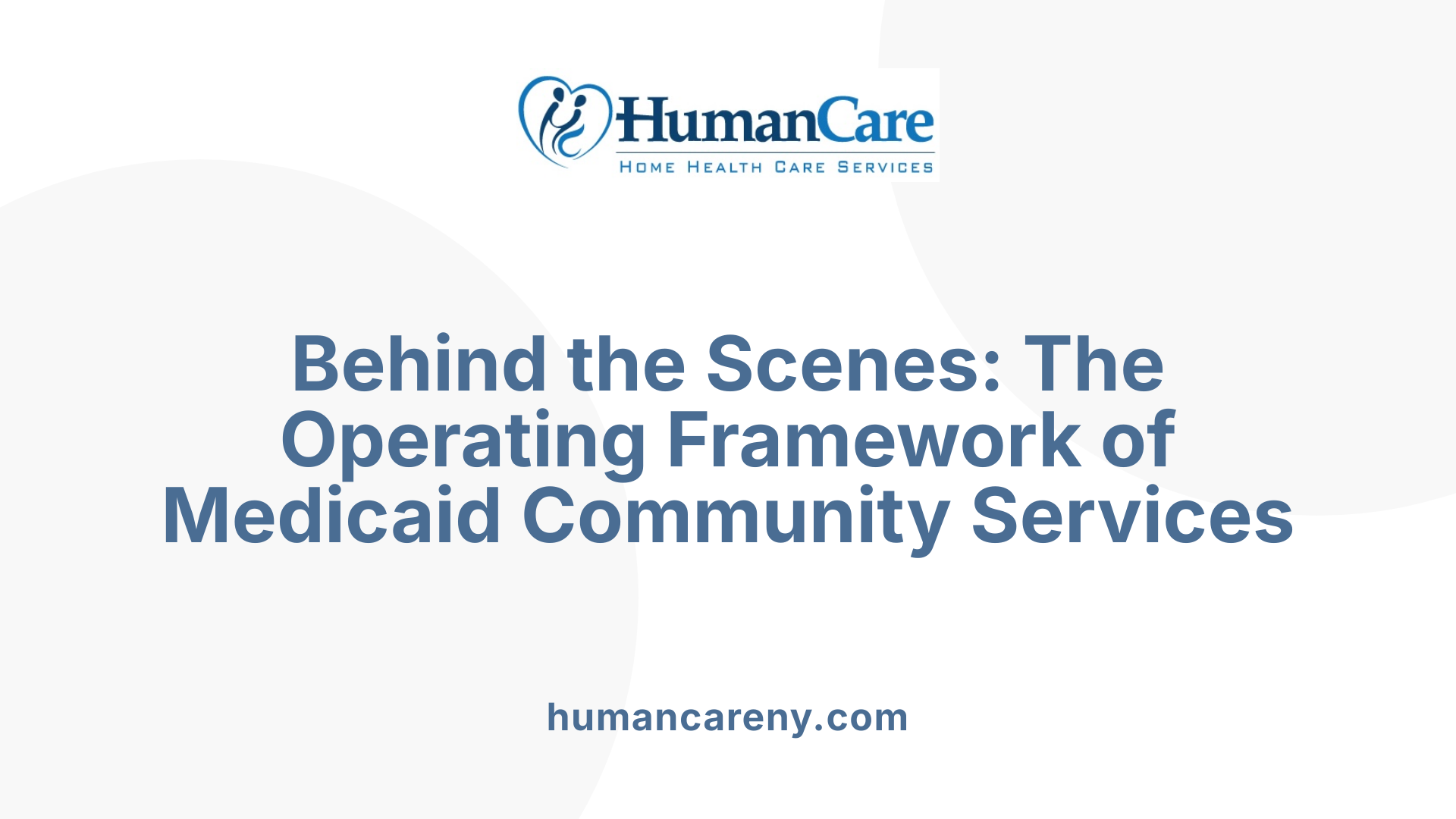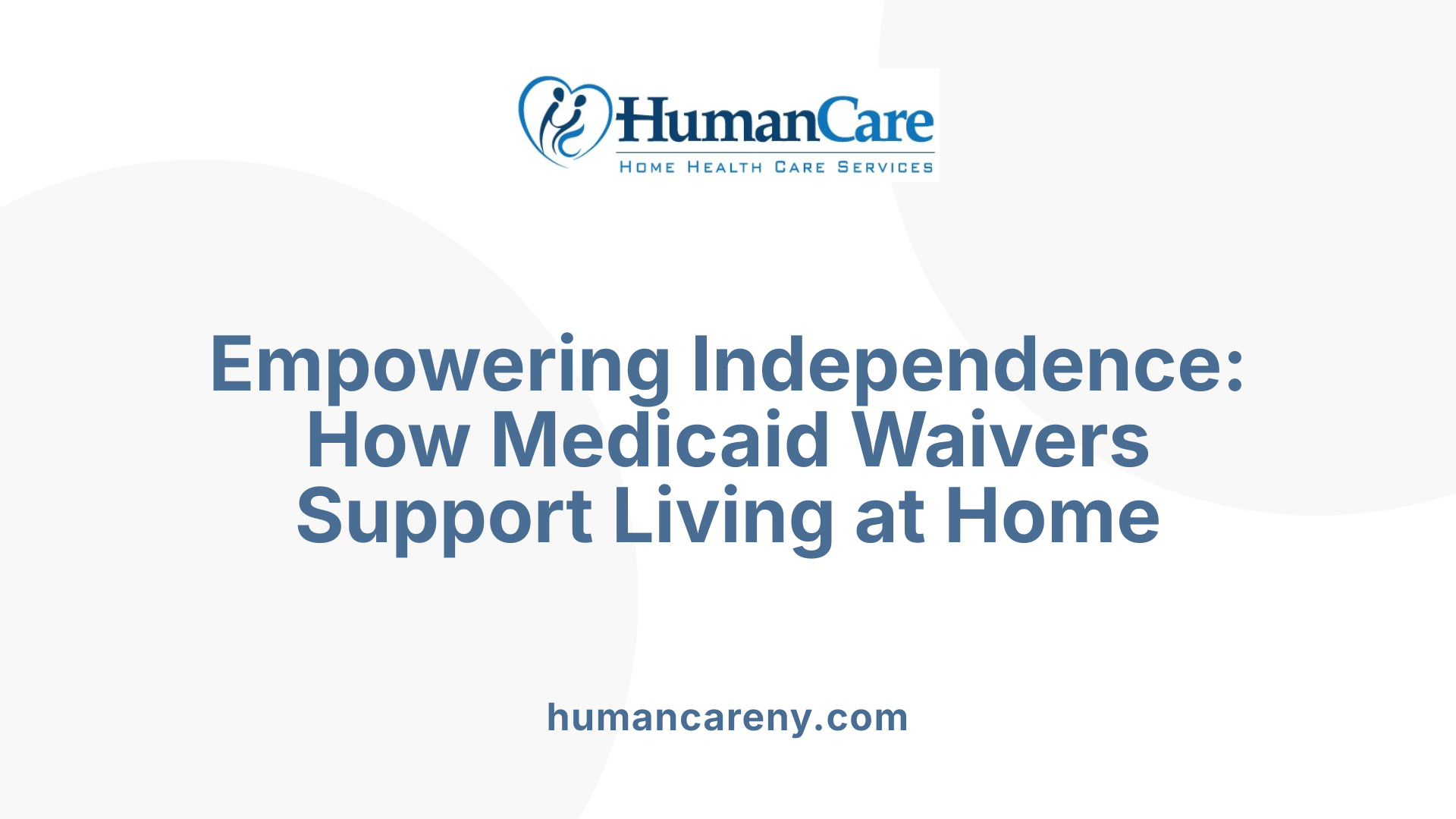The benefits of Medicaid waiver programs in community-based care
Transforming Long-Term Care: The Power of Medicaid Waivers in Community Living

Understanding Community-Based Solutions for Long-Term Care
Medicaid waiver programs have revolutionized long-term care by shifting services from institutional settings to community-based environments. These programs not only uphold individuals' rights to live independently but also offer a flexible, cost-effective approach to healthcare that benefits individuals, families, and society at large.
Core Benefits of Medicaid Waiver Programs in Community-Based Care

What are the core benefits of Medicaid waiver programs in community-based care?
Medicaid waiver programs play a vital role in supporting individuals with disabilities or chronic conditions by offering a variety of personalized services that promote independence. These programs enable people to live in their own homes or communities rather than in institutions, aligning with federal standards such as the Olmstead decision which emphasizes community integration.
A wide range of supports are available under these programs, including case management, personal care, respite services, transportation, and assistive technology. For example, services like home health aides and habilitation help individuals maintain their daily routines and develop skills necessary for independent living.
One of the main advantages of Medicaid waivers is their focus on community integration and dignity. They promote social participation and ensure individuals’ rights to live in the least restrictive environment, fostering a sense of belonging and community connection.
Economically, these programs are cost-effective. They help reduce reliance on costly institutional care settings, decreasing healthcare expenditures for states and the federal government. Moreover, by creating jobs in home care and related sectors, Medicaid waivers contribute to local economies.
Research supports the positive impact of these programs, indicating improved access to essential services and a reduction in disparities among varied populations, including racial minorities and underserved communities. In summary, Medicaid waiver programs enhance quality of life, support economic stability, and promote equitable access to long-term community-based care.
Operational Aspects of Medicaid Waiver Programs in Community Settings

How do Medicaid waiver programs operate within community-based settings?
Medicaid waiver programs are designed to offer flexible and personalized services directly in individuals’ homes or communities. These programs, authorized under federal law (Section 1915(c)), enable states to develop tailored service packages that meet specific population needs, such as the elderly, people with disabilities, or those at risk of institutionalization.
State agencies, like California’s Department of Healthcare Services (DHCS), oversee enactment, management, and ongoing adjustments of these programs. They ensure services are delivered effectively, monitor capacity, and approve program amendments. This oversight is essential to maintaining quality and compliance.
Service coordination is carried out by multidisciplinary teams comprised of healthcare providers, case managers, and support staff. These teams organize comprehensive care plans that include services like personal care, habilitation, respite, and medical support, ensuring individuals receive holistic, continuous care.
Prioritization is vital within these programs, especially for individuals transitioning from institutional settings or those at high risk. Policies focus on safety, health status, and cost considerations, making certain that resources are directed to those with the greatest need.
Technological tools, such as telehealth and remote monitoring, are increasingly integrated to enhance service access, efficiency, and responsiveness. These innovations support timely interventions and expand reach, particularly in underserved or rural areas.
Overall, Medicaid waivers facilitate community integration by providing person-centered, coordinated services that promote independence and align with individual preferences, all while adapting to technological and operational advancements.
Advantages for Individuals with Disabilities and Their Families
 Medicaid waiver programs provide many benefits for individuals with disabilities, emphasizing personalized care that fosters independence and dignity. They allow individuals to live in their homes or communities instead of in institutional settings, supporting the concept of aging in place. Services such as home modifications, personal care, and assistive technology help individuals maintain their independence and adapt their living environments to meet their needs.
Medicaid waiver programs provide many benefits for individuals with disabilities, emphasizing personalized care that fosters independence and dignity. They allow individuals to live in their homes or communities instead of in institutional settings, supporting the concept of aging in place. Services such as home modifications, personal care, and assistive technology help individuals maintain their independence and adapt their living environments to meet their needs.
These programs offer access to a wide array of support services, including therapies, case management, respite care, and employment assistance. Such offerings help individuals develop skills, participate fully in their communities, and pursue meaningful activities.
Supporting a person’s ability to live independently also reduces social isolation, leading to better overall well-being. Family members benefit greatly as well, as they receive support and resources that enable them to balance caregiving responsibilities with their work and personal lives.
Overall, Medicaid HCBS waivers are designed to be flexible and tailored. They focus on improving quality of life, promoting social integration, and providing equitable access to care. These programs are essential in creating supportive environments where people with disabilities can thrive, maintain their autonomy, and strengthen their roles within their families and communities.
**For more information, search:
Positive Impacts on Recipients, Families, and the Community
 Medicaid waiver programs have a profound and positive influence on the lives of individuals, their families, and the wider community. By providing extensive access to home and community-based services (HCBS), these programs help meet the healthcare needs of people with disabilities, developmental delays, and chronic health conditions. For example, many recipients benefit from services like in-home nursing, personal care, and assistive technology, which support independent living and community participation.
Medicaid waiver programs have a profound and positive influence on the lives of individuals, their families, and the wider community. By providing extensive access to home and community-based services (HCBS), these programs help meet the healthcare needs of people with disabilities, developmental delays, and chronic health conditions. For example, many recipients benefit from services like in-home nursing, personal care, and assistive technology, which support independent living and community participation.
One of the most significant impacts is the reduction of unmet healthcare needs. Particularly for children with autism spectrum disorder and individuals with intellectual or developmental disabilities, HCBS waivers fill gaps in traditional healthcare, ensuring timely access to necessary services. This not only improves individual health outcomes but also minimizes unnecessary hospitalizations and institutional stays.
Community integration and social participation are promoted through programs that allow individuals to live in their own homes and partake actively in community activities. Services such as adult day health programs, transportation, and habilitation help individuals connect with their communities, fostering a sense of belonging and reducing social isolation.
Support for family caregivers is another vital benefit. Respite care services give family members a necessary break from caregiving responsibilities, reducing caregiver stress and burnout. These programs also offer training and support, enabling families to better care for their loved ones.
Economically, Medicaid waivers contribute to the local and national economies by creating jobs for healthcare workers, service providers, and administrative staff. They bolster community health systems and encourage local service development, which adds to the overall economic vitality.
In summary, Medicaid HCBS waivers generate positive effects that extend beyond individual recipients. They enhance quality of life, promote social equity, and foster economic growth, making communities more inclusive, resilient, and healthy.
Scope, Range, and Evolution of Medicaid Waiver Services

What is the scope and range of services offered by Medicaid waiver programs?
Medicaid waiver programs provide a broad spectrum of services tailored to support individuals with long-term needs within community settings. These programs include assistance with daily activities, such as personal care, homemaking, and home health aide services, which help individuals maintain independence at home.
Additional services encompass home modifications, transportation, adult day health services, supportive employment, habilitation, and respite care. They also offer assistive technologies and minor home adaptations to improve safety and functionality.
The specific services available can differ based on the type of waiver—like 1915(c) or 1115—and the targeted population, such as seniors or individuals with disabilities. This flexibility enables states to design programs that best fit their residents’ needs, often targeting geographically remote or high-risk groups.
Beyond traditional Medicaid services, waivers increasingly incorporate systemic reforms. Programs like California’s CalAIM aim to integrate health and social supports, creating a more holistic approach to care. Overall, Medicaid waivers serve as vital tools for providing comprehensive, individualized support to promote community living and prevent unnecessary institutionalization.
| Service Type | Description | Population Targeted |
|---|---|---|
| Personal Care | Assistance with bathing, dressing, household tasks | Elderly, disabled individuals |
| Home Modifications | Structural changes to improve safety and access | Disabled, elderly |
| Respite Care | Temporary relief for caregivers | Families of persons with disabilities |
| Employment Support | Supported employment opportunities | Disabled individuals |
| Case Management | Coordination of care services | All eligible populations |
| Adult Day Health | Supervised daytime programs | Elderly, disabled |
| Assistive Technology | Devices to support mobility and daily activities | People with disabilities |
This extensive range illustrates how Medicaid waivers expand the traditional benefits of Medicaid, emphasizing community-based care aligned with individual preferences and safety standards.
Historical Context, Effectiveness, and Future of Medicaid Waivers
What is the history and effectiveness of Medicaid waiver programs in supporting long-term, community-based care?
Medicaid waiver programs originated with Section 2176 of the Omnibus Budget Reconciliation Act (OBRA) of 1981, also known as Section 1915(c) waivers. These programs were initially designed to offer states flexibility to develop targeted services that kept individuals with disabilities and the elderly in their communities rather than in institutions. Over time, the scope of these waivers has expanded significantly.
Beginning in the 1960s, waiver programs evolved from small, experimental initiatives into broad, state-wide reforms. They have increasingly supported efforts to enhance community-based long-term care options by providing a variety of home- and community-based services (HCBS), including personal care, respite, in-home nursing, and assistive technologies.
The effectiveness of Medicaid waivers is evident in several areas. They help reduce reliance on costly institutional care, which benefits both individuals and state budgets. They also promote individual choice, allow personalized service plans, and improve access to necessary services for people with intellectual, developmental, and physical disabilities.
Moreover, legal mandates such as the Supreme Court's decision in Olmstead v. L.C. have reinforced the importance of community-based care, urging states to expand their HCBS offerings. This legal framework, along with ongoing innovations like CalAIM (California Advancing and Innovating Medi-Cal), reflects a commitment to modernize and improve long-term care services.
Today, Medicaid waivers are a central element in providing cost-effective, person-centered, community-based care, supporting the rights of individuals with disabilities, and fostering more equitable, accessible healthcare options across the United States.
Advancing Community-Centered Care through Policy and Practice
Medicaid waiver programs have fundamentally transformed long-term care by emphasizing community-based, personalized services that uphold individual rights and dignity. Their growth over the past decades has demonstrated substantial improvements in access, quality of life, and economic efficiency. Continued reforms and technological innovations promise to expand these benefits further, fostering inclusive communities where people with disabilities can thrive. Supporting long-term, community-oriented care not only aligns with federal mandates but also reflects a societal commitment to compassion, independence, and equitable health services for all.
References
- Home & Community-Based Services 1915(c)
- United States Medicaid Home and Community-Based ...
- Why did they do it that way? Home and community-based ...
- What is Medicaid Home Care (HCBS)?
- Home and Community Based Services Waiver - OPWDD
- Home and Community Based Services
- Home and Community-Based Services Waivers - PMC
- The Benefits of Medicaid Waivers
- What is a Medicaid waiver program? Eligibility, rules, and ...


































































































.avif)
